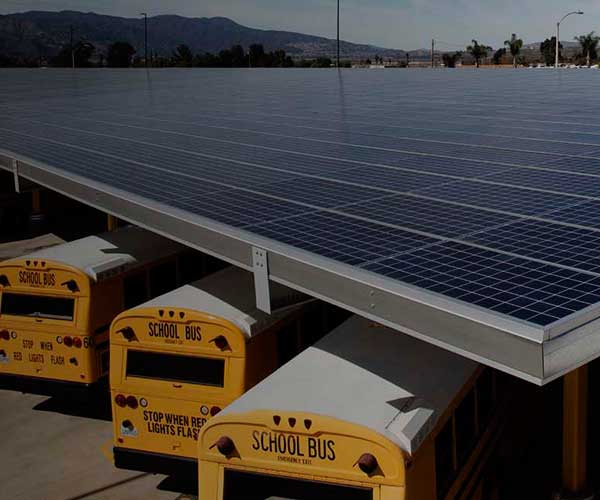As solar deployment continues to grow, even amid political headwinds, the adoption of onsite solar by public and private schools serves as a strong undercurrent in the larger trend.
In November last year, the Solar Foundation’s Brighter Future report counted more than 5,500 schools powered by solar, 61 percent of which had been built in the last five years, lending the country more than 5,500 examples of why solar makes sense outside and inside of the classroom.
Solar is Letting Students and Budgets Breathe Easier
As schools scramble to find ways to make smaller budgets work for larger classrooms, falling solar costs are opening doors for schools to save millions of dollars through a variety of onsite solar applications and financing models.
While schools with wide, flat rooftops are building arrays atop their buildings, schools without the roof space have increasingly made use of carports systems in their parking lots and ground-mounted systems where there is enough land.
Similarly, there are numerous financial structures that allow schools to access solar energy.
Though some schools and districts may have the means to purchase systems outright, more than 90 percent of schools with solar turn to third-party financing through a power purchase agreement (PPA), enabling them to go solar with no upfront cost. This is particularly useful for schools dealing with budget constraints, as PPAs allow schools and districts to see immediate savings without requiring an upfront investment.
The diversity of options has helped schools in a variety of situations offset over 1 million metric tons of carbon dioxide annually through solar nationwide, contributing to a cleaner environment for the future that today’s students will shape.
Solar Provides an Educational Opportunity for Students
Aside from the cost and health benefits that solar energy provides, an onsite array provides a first-hand opportunity for students to both learn about the technology and champion its use.
Solar can play a particularly useful role for science, technology, engineering, and math (STEM) programs, which can carve out a section of the curriculum to focus on energy and solar with a first-hand case study.
As reported by the Solar Foundation, after Antelope Velley School District in California participated in a solar-focused science and algebra lesson involving its solar array, test scores in science and math rose by 60 percent.
Similarly, specialized educational materials offered to different levels of students including case studies, lesson plans, and tours led by our engineering team. These hands-on science lessons engage students and make solar more than just an energy source.
Solar also gives students a chance to champion a clean energy cause, adding valuable leadership experience. Many schools across the country that have gone solar were aided by student-led efforts to adopt the technology.
While school administrators and facility managers will always make the decision if and how to go solar, the opportunity to bring students on board can boost student engagement and help mold future leaders.
Is Your School a Fit?
Every school has unique needs and a unique site, and finding the most effective way to go solar is important for schools looking to maximize their cost savings.
This is an excerpt from the August 2018 edition of The SOL SOURCE, a monthly electronic newsletter analyzing the latest trends in renewable energy based on our unique position in the solar industry.













Comments